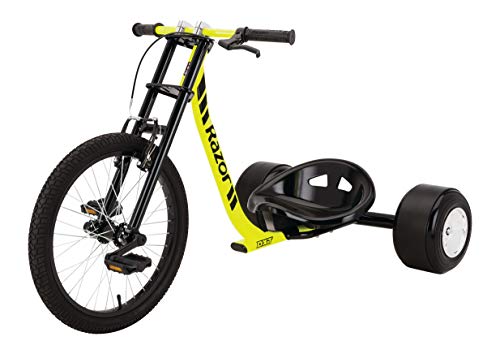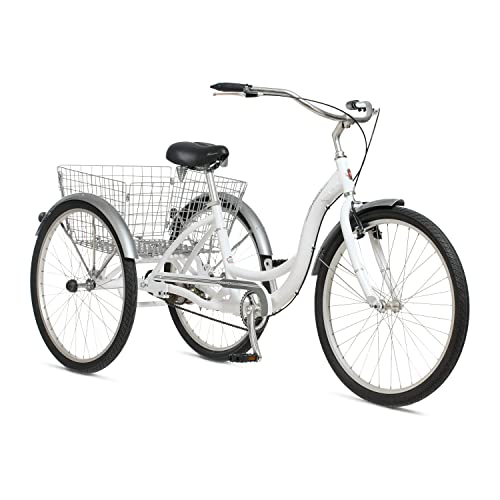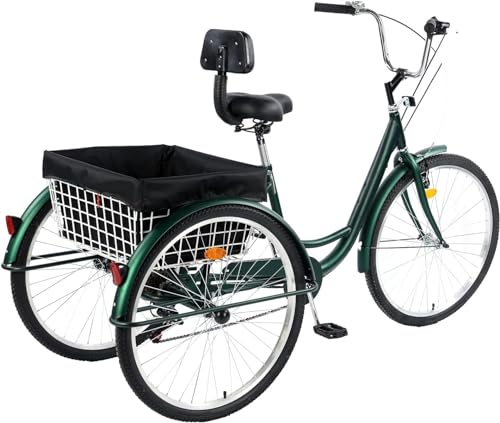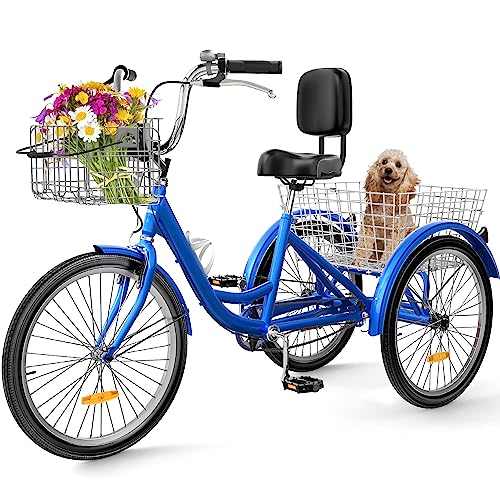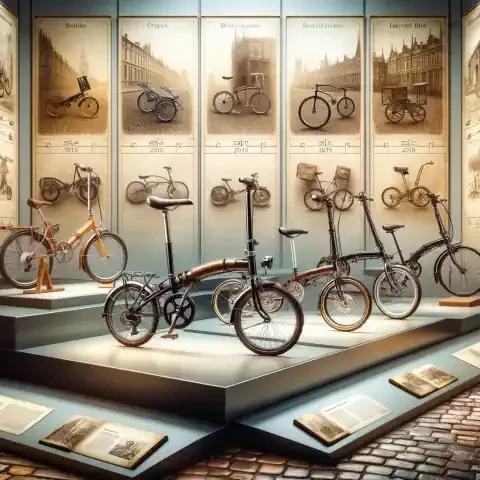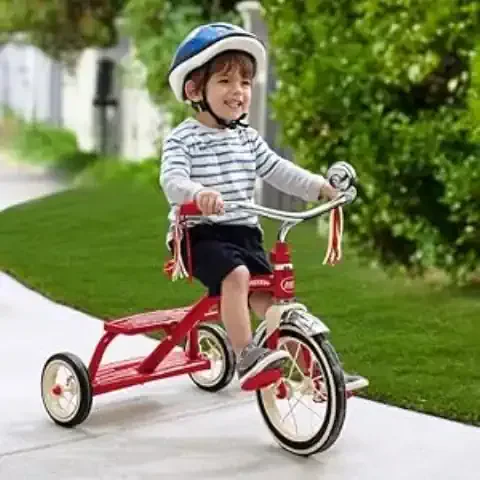The Adult Tricycle: Rediscovering Mobility and Freedom
Introduction
In the realm of personal transportation, the adult tricycle stands as a beacon of versatility, accessibility, and freedom. Often overshadowed by its two-wheeled counterparts, the adult tricycle has quietly but steadily gained traction, emerging as a practical solution for individuals seeking an alternative mode of transportation that prioritizes stability and comfort.
Definition and Overview
Unlike its traditional counterpart designed for children, the adult tricycle is specifically engineered to accommodate the needs and preferences of grown-ups. Characterized by its three wheels and sturdy frame, the adult tricycle offers enhanced stability, making it an ideal choice for individuals of all ages, particularly those with balance concerns or limited mobility.
Historical Context
The concept of the tricycle traces its roots back to the early 17th century, when it was initially developed as a plaything for children. However, as industrialization swept across the globe, tricycles began to evolve, with manufacturers recognizing the potential for adult use. By the late 19th and early 20th centuries, adult tricycles had become a common sight, especially among urban commuters and industrial workers seeking an efficient means of transportation.
Rise in Popularity
In recent years, the adult tricycle has experienced a resurgence in popularity, fueled by shifting societal trends and a growing emphasis on sustainability and health-conscious living. As individuals seek alternatives to traditional automobiles and embrace more eco-friendly modes of transport, the adult tricycle has emerged as a viable option, offering a perfect blend of practicality, comfort, and environmental responsibility.
As we delve deeper into the realm of adult tricycles, it becomes evident that these humble yet remarkable vehicles hold the potential to revolutionize personal transportation, offering a glimpse into a future where mobility knows no bounds.
Evolution of the Adult Tricycle
Early Designs and Purpose
The journey of the adult tricycle begins with its early designs, which were primarily crafted with utilitarian purposes in mind. These tricycles featured sturdy frames, large cargo baskets, and often boasted a single-speed drivetrain, making them well-suited for tasks such as transporting goods, navigating crowded streets, or even serving as mobile vendors' carts.
Technological Advancements
As time progressed, so too did the technology behind adult tricycles. Manufacturers began integrating innovations such as multiple-speed gear systems, ergonomic seating arrangements, and improved braking mechanisms, thereby enhancing the overall comfort and performance of these vehicles. Additionally, advancements in materials science led to the development of lighter yet stronger frames, further augmenting the efficiency and durability of adult tricycles.
Modern Features and Variations
In the contemporary landscape, adult tricycles have evolved to encompass a wide array of features and variations, catering to diverse needs and preferences. From electric-assist models that provide an extra boost during pedaling to folding designs that enhance portability and storage, the modern adult tricycle offers a level of customization and adaptability that was once unimaginable. Furthermore, specialized variants, such as recumbent tricycles and delta trikes, have emerged to cater to specific niches within the cycling community, further expanding the versatility and appeal of these vehicles.
As we reflect on the evolution of the adult tricycle, it becomes apparent that what began as a humble mode of transportation has blossomed into a diverse and dynamic category, driven by innovation, functionality, and a steadfast commitment to meeting the ever-evolving needs of riders.
Practicality and Utility
Adult tricycles offer a unique blend of practicality and utility that makes them appealing to a wide range of individuals seeking reliable and accessible transportation options. From urban commuters to recreational riders and cargo haulers, tricycles serve diverse needs and purposes with efficiency and ease.
Transportation for All Ages
One of the most notable features of adult tricycles is their inclusivity across age groups. While traditional bicycles may pose challenges for individuals with mobility limitations or balance issues, tricycles provide a stable and secure riding experience that is well-suited for seniors, people with disabilities, and those recovering from injuries. This accessibility ensures that people of all ages and abilities can enjoy the freedom and independence that comes with cycling.
Accessibility and Inclusivity
In addition to catering to diverse physical abilities, adult tricycles also promote inclusivity in terms of gender, socioeconomic status, and cultural background. Unlike some forms of transportation that may require specialized skills or expensive equipment, tricycles are relatively easy to operate and maintain, making them accessible to a wide range of people regardless of their background or experience level. This inclusivity fosters a sense of community and belonging among tricycle riders, who come together to share their passion for cycling and explore the world around them.
Cargo Capacity and Versatility
Beyond personal transportation, adult tricycles are also prized for their utility in carrying cargo and goods. With spacious baskets, racks, and trailers, tricycles offer ample storage space for groceries, luggage, and other essentials, making them ideal for running errands, commuting to work, or embarking on leisurely outings. Their stability and load-bearing capacity make them well-suited for a variety of tasks, from hauling heavy loads to transporting pets or children, further enhancing their practicality and versatility in everyday life.
In summary, the practicality and utility of adult tricycles make them indispensable companions for individuals seeking reliable, accessible, and efficient modes of transportation. By offering inclusive riding experiences, accommodating diverse needs, and providing ample cargo capacity, tricycles empower people to navigate their world with confidence, convenience, and joy.
Health Benefits
The resurgence of the adult tricycle isn't solely rooted in its practicality; it's also deeply intertwined with its positive impact on physical and mental wellbeing. Beyond just a mode of transportation, riding an adult tricycle offers a plethora of health benefits that make it an attractive option for individuals seeking an active lifestyle.
Low-Impact Exercise
One of the most significant advantages of riding an adult tricycle is its ability to provide low-impact exercise. Unlike high-impact activities such as running or weightlifting, which can put strain on joints and muscles, cycling offers a gentle yet effective form of cardiovascular exercise. The smooth, rhythmic motion of pedaling helps improve circulation, strengthen muscles, and enhance overall cardiovascular health without placing undue stress on the body.
Improved Balance and Coordination
For individuals with balance issues or mobility limitations, riding an adult tricycle can be particularly beneficial. The three-wheel design offers enhanced stability, reducing the risk of falls and injuries commonly associated with traditional bicycles. Moreover, the act of steering and maneuvering a tricycle helps improve coordination and spatial awareness, making it an excellent option for individuals looking to maintain or enhance their motor skills.
Mental Wellbeing and Stress Reduction
Beyond the physical benefits, riding an adult tricycle can also have a profound impact on mental wellbeing. Engaging in regular exercise releases endorphins, neurotransmitters that promote feelings of happiness and reduce stress. The simple act of pedaling outdoors, surrounded by nature and fresh air, can provide a much-needed escape from the pressures of daily life, helping to alleviate anxiety and improve overall mental health.
In essence, the adult tricycle offers far more than just a means of getting from point A to point B—it serves as a gateway to a healthier, happier lifestyle. By incorporating regular tricycle rides into their routine, individuals can reap the numerous physical and mental benefits that come with this enjoyable and accessible form of exercise.
Environmental Impact
Amidst growing concerns about climate change and environmental sustainability, the adult tricycle emerges as a compelling solution for eco-conscious individuals seeking to reduce their carbon footprint. Unlike traditional automobiles that rely on fossil fuels and emit harmful greenhouse gases, adult tricycles offer a cleaner and more sustainable mode of transportation that aligns with the principles of environmental stewardship.
Sustainable Transportation Option
One of the most significant advantages of adult tricycles from an environmental standpoint is their minimal environmental impact. Powered solely by human energy or, in the case of electric-assist models, by rechargeable batteries, tricycles produce zero emissions during operation. This stands in stark contrast to motor vehicles, which not only contribute to air and noise pollution but also consume finite fossil fuel resources, exacerbating climate change and environmental degradation.
Reduction in Carbon Emissions
By opting for an adult tricycle over a traditional car or motorcycle, individuals can significantly reduce their carbon footprint. The absence of combustion engines means that tricycles produce no tailpipe emissions, helping to improve air quality and mitigate the harmful effects of vehicle exhaust on public health and the environment. Moreover, the energy required to manufacture and maintain tricycles is considerably lower compared to that of automobiles, further reducing their overall environmental impact.
Contributing to Green Initiatives
Beyond their direct environmental benefits, adult tricycles also play a role in promoting sustainability and supporting green initiatives within communities. As more people embrace tricycles as a viable mode of transportation, local governments and organizations are increasingly investing in infrastructure improvements to accommodate cyclists, such as dedicated bike lanes, bike-sharing programs, and secure parking facilities. These initiatives not only encourage more people to cycle but also contribute to the creation of more livable, eco-friendly urban environments.
In summary, the adult tricycle represents more than just a mode of transportation—it embodies a sustainable and environmentally responsible lifestyle choice. By embracing tricycles as a clean and efficient means of getting around, individuals can play a part in building a greener, more sustainable future for generations to come.
Cultural Significance
Beyond its practical utility and environmental benefits, the adult tricycle holds a significant place in cultural narratives, symbolizing notions of community, resilience, and freedom of mobility. Its presence in various aspects of society reflects a broader cultural recognition of the importance of alternative forms of transportation and the diverse needs of individuals.
Social Perception and Stigma
Historically, adult tricycles may have been subject to certain stigmas or stereotypes, often associated with notions of old age or physical disability. However, perceptions are evolving as more people recognize the practicality and versatility of tricycles for individuals of all ages and abilities. The increasing visibility of tricycles in urban environments and popular media has helped to challenge these stereotypes, fostering a more inclusive and accepting attitude towards alternative modes of transportation.
Community Building and Connectivity
One of the most significant cultural aspects of adult tricycles is their ability to foster community and connectivity. Whether it's through organized group rides, community cycling events, or informal gatherings at local parks, tricycles serve as a catalyst for social interaction and camaraderie. Shared experiences and mutual appreciation for the freedom of mobility that tricycles provide can help strengthen bonds within communities and create a sense of belonging among riders.
Representation in Media and Arts
The adult tricycle has also found its place in various forms of media and artistic expression, further solidifying its cultural significance. From literature and film to visual arts and music, tricycles have been depicted as symbols of independence, adventure, and self-discovery. These representations not only reflect the practical realities of tricycle usage but also capture the broader cultural imagination, resonating with audiences on a deeply emotional level.
In essence, the cultural significance of the adult tricycle extends far beyond its function as a mode of transportation. It serves as a symbol of resilience, inclusivity, and the enduring human desire for freedom and mobility. By embracing tricycles as more than just vehicles, but as cultural artifacts that reflect our values and aspirations, we enrich our understanding of the role they play in shaping our communities and collective identity.
Challenges and Considerations
Despite the many benefits and cultural significance of adult tricycles, their widespread adoption and integration into mainstream transportation systems face several challenges and considerations. Addressing these obstacles is essential to ensure that tricycles can fulfill their potential as viable alternatives to traditional modes of transportation.
Infrastructure Adaptations
One of the primary challenges facing adult tricycles is the need for infrastructure adaptations to accommodate their unique requirements. While traditional bicycles have long benefited from dedicated bike lanes and cycling-friendly infrastructure, adult tricycles, with their larger size and different handling characteristics, may require additional considerations. Ensuring that existing infrastructure is accessible and safe for tricycle users, as well as incorporating tricycle-specific amenities such as wider paths and designated parking areas, is essential to encourage greater adoption and usage.
Safety Concerns and Regulations
Another consideration is the need to address safety concerns and regulatory frameworks surrounding adult tricycles. While tricycles offer enhanced stability compared to bicycles, they may still be susceptible to accidents and collisions, particularly in densely populated urban areas. Implementing comprehensive safety measures, such as mandatory helmet use and adherence to traffic laws, can help mitigate risks and ensure the safety of tricycle riders and pedestrians alike. Additionally, establishing clear guidelines and regulations governing tricycle usage, including licensing and registration requirements, can help promote responsible and lawful operation.
Market Accessibility and Affordability
Finally, ensuring that adult tricycles are accessible and affordable to a wide range of individuals is crucial for fostering greater adoption. While tricycles offer numerous benefits, they may also come with a higher upfront cost compared to traditional bicycles or other forms of transportation. Ensuring affordability through initiatives such as subsidies, financing options, or government incentives can help make tricycles more accessible to individuals from diverse socioeconomic backgrounds. Moreover, increasing awareness of the long-term cost savings and health benefits associated with tricycle usage can help offset initial investment concerns and encourage more people to consider tricycles as a viable transportation option.
In summary, addressing challenges related to infrastructure, safety, and affordability is essential to realizing the full potential of adult tricycles as sustainable and inclusive modes of transportation. By proactively addressing these considerations, policymakers, urban planners, and community stakeholders can create an environment where tricycles can thrive and contribute to building more resilient, equitable, and livable cities.
Case Studies and Success Stories
Examining real-life examples and success stories can provide valuable insights into the impact and potential of adult tricycles in diverse contexts. From personal testimonials to community initiatives and entrepreneurial ventures, these case studies highlight the transformative power of tricycles in improving mobility, fostering community engagement, and promoting sustainable living.
Personal Testimonials
Individuals who have incorporated adult tricycles into their daily lives often have compelling stories to share. These personal testimonials offer firsthand accounts of the benefits and challenges of tricycle usage, providing valuable perspectives on the role tricycles play in enhancing quality of life and promoting independence. Whether it's a senior citizen rediscovering the joy of cycling or a commuter navigating congested city streets with ease, these stories underscore the transformative impact of tricycles on individuals' lives.
Community Initiatives
In many communities around the world, grassroots initiatives are emerging to promote tricycle usage and advocate for cycling-friendly infrastructure. From community-led cycling clubs to advocacy organizations lobbying for policy changes, these initiatives play a crucial role in raising awareness about the benefits of tricycles and advocating for greater inclusivity in transportation planning. By mobilizing local residents and engaging with policymakers, these initiatives are driving positive change and fostering a more supportive environment for tricycle users.
Business Ventures and Entrepreneurship
Entrepreneurs and businesses are also capitalizing on the growing popularity of adult tricycles by developing innovative products and services tailored to the needs of tricycle riders. From specialty tricycle shops offering custom-built models to delivery services utilizing tricycles for last-mile logistics, these ventures demonstrate the diverse range of opportunities within the tricycle market. By tapping into niche markets and addressing specific customer needs, these businesses are not only driving economic growth but also contributing to the mainstreaming of tricycle culture.
In conclusion, case studies and success stories serve as powerful examples of the transformative potential of adult tricycles in improving mobility, promoting sustainability, and fostering community resilience. By highlighting real-life experiences and initiatives, we gain valuable insights into the myriad ways tricycles are shaping the future of transportation and empowering individuals and communities alike.
Future Outlook
Looking ahead, the future of adult tricycles appears promising, with significant potential for continued innovation, integration, and expansion. As societal attitudes towards transportation evolve and environmental consciousness grows, adult tricycles are poised to play an increasingly prominent role in shaping the urban landscape and redefining the way we move.
Potential Innovations
One avenue for future development lies in the realm of technological innovation. Advancements in materials science, manufacturing processes, and electric propulsion systems offer exciting possibilities for creating lighter, more efficient, and environmentally sustainable tricycles. From incorporating regenerative braking technology to enhancing connectivity through smart features and IoT integration, the next generation of adult tricycles promises to deliver enhanced performance, comfort, and convenience.
Integration with Smart Technology
The integration of adult tricycles with smart technology represents another area of opportunity. By leveraging GPS tracking, smartphone connectivity, and data analytics, tricycle users can access real-time navigation assistance, route optimization, and personalized fitness tracking. Moreover, smart tricycle-sharing schemes and ride-hailing platforms could facilitate greater access to tricycles in urban areas, promoting multimodal transportation and reducing reliance on private automobiles.
Role in Sustainable Urban Development
Furthermore, adult tricycles are poised to play a pivotal role in promoting sustainable urban development. As cities grapple with issues such as traffic congestion, air pollution, and limited space, tricycles offer a practical solution for addressing these challenges. By prioritizing investments in cycling infrastructure, implementing policies that encourage active transportation, and fostering a culture of cycling, cities can create more livable, resilient, and environmentally friendly urban environments where tricycles thrive.
In conclusion, the future outlook for adult tricycles is one of promise and potential. By embracing innovation, harnessing the power of technology, and prioritizing sustainability, tricycles have the opportunity to revolutionize urban transportation and improve quality of life for people around the world. As we look towards the horizon, let us envision a future where tricycles are not just a mode of transportation, but a catalyst for positive change in the way we live, work, and move through our cities.
Conclusion
In the journey through the landscape of adult tricycles, it becomes evident that these vehicles represent far more than just a mode of transportation. They embody a convergence of practicality, sustainability, and cultural significance, offering a glimpse into a future where mobility is redefined, and freedom knows no bounds.
As we reflect on the myriad benefits and opportunities presented by adult tricycles, it is clear that they hold immense potential to shape the way we navigate our world. From providing accessible transportation options for individuals of all ages and abilities to promoting health and wellbeing through physical activity, tricycles offer a multifaceted solution to the complex challenges facing urban mobility.
Moreover, the cultural significance of adult tricycles extends beyond their function as vehicles; they serve as symbols of resilience, community, and the enduring human desire for exploration and self-expression. Through their integration with smart technology, innovative design, and sustainable urban planning, tricycles have the power to transform our cities into vibrant, inclusive, and environmentally friendly spaces where people can thrive.
As we embark on this journey towards a tricycle-inclusive future, let us embrace the opportunities for innovation, collaboration, and positive change that lie ahead. By harnessing the full potential of adult tricycles, we can create a world where mobility is not just a means to an end but a pathway to greater freedom, connection, and wellbeing for all.

